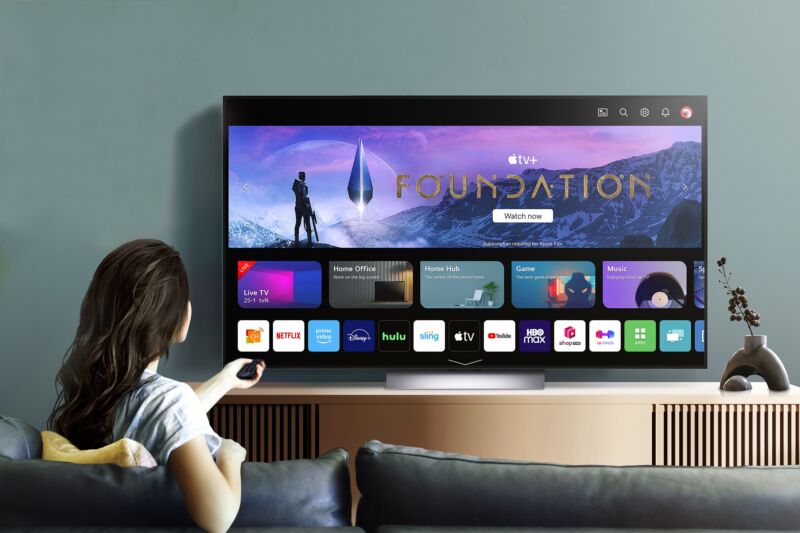
LG
January means new technology product announcements from the CES show in Las Vegas. LG, a regular attendee at CES, announced this year’s OLED TV lineup at the show. As with LG’s 2022 OLED TVs, the focus this year is on boosting brightness. But in 2023, LG’s OLED TVs will also face stiffer competition, including from Samsung Display’s QD-OLED technology, which should also get brighter.
Today, LG announced updates to its 8K Z Series (77 and 88 inches), high-end 4K G Series (55-97 inches), and flagship 4K C Series (42-93 inches) OLED TVs. The company hasn’t given details on any new additions to its less-advanced B-series, but Forbes reported that LG would eventually release B3 OLED TVs with an A7 Gen 6 processor and 55, 65 and 77-inch sizes this year . LG will reportedly no longer sell the entry-level A series in North America.
In addition to using OLED.EX panels (which LG calls “OLED Evo” in its consumer TVs), LG Display announced in late 2021 that OLED.EX panels were up to 30 percent brighter than traditional OLED panels; LG also claims that the 55-, 65- and 75-inch G3 are up to 70 percent brighter when using a feature called Brightness Booster Max. The feature is not available on the 83- or 97-inch G3 or other LG OLED TV series.
According to LG’s announcement on Monday, the new TVs squeeze out more nits by using a new “light control architecture and light boosting algorithms.” It also said the TVs map and control brightness “pixel by pixel” for sharper picture quality.

LG
LG doesn’t typically provide specific brightness specs on its product pages, but FlatPanelsHD reported that an LG spokesperson pointed to a peak brightness of 1,800 nits for the G3, with a Vivid mode “maybe a little brighter.” Forbes, meanwhile, reported that the 2023 G3 could surpass 1,500 nits in a 10 percent window with HDR.
FlatPanelsHD also cited a document claiming up to 2,100 nits with the G3, speculated to be referring to the G3’s Vivid mode and 235 nits for full-screen brightness. The publication previously recorded a peak brightness of 930 nits with the 2022 G2 and 166 nits for full-screen brightness.
FlatPanelsHD and Forbes reported that LG’s new G3 TVs could hit the 70 percent brightness boost thanks to Micro Lens Array (MLA). As Forbes explained, these TVs have an extra layer of small lenses that are used to better focus light on the viewer without increasing power consumption or the risk of burn-in compared to other OLED TVs.
Increasing competition
OLED is known for really dark blacks and incredible contrast, but it can’t compete with LCD panels when it comes to brightness potential. The expected brightness performance of LG’s G3 TVs sounds impressive on paper, but the OLED TV landscape is also more competitive than in years past, courtesy of Samsung Display’s quantum dot OLED (QD-OLED) that entered the mix last year .
QD OLED panels, which claim to improve color performance, including highlights, in dark areas and at brightness settings, are already being used by Samsung and other TV companies. And today, Samsung Display announced that its 2023 QD-OLED panels, which include TVs and monitors, can reach peak brightness of “over 2,000 nits.” Samsung Display’s announcement said it increased brightness by using a new optimization algorithm, IntelliSense AI, and a material called “OLED HyperEfficient EL” to improve the color brightness of each RGB pixel.
No official TVs have been announced with the brighter QD-OLED technology yet; However, Samsung Display also noted that it is making a 77-inch QD-OLED TV panel available. It’s also worth noting that when Samsung announced Display QD-OLED at CES 2022, we saw those TVs and monitors available later that year.
While LG claims to have sold the most OLED TVs from 2013 to 2022, there is more competition from vendors like Panasonic, Sony and Samsung, the top TV seller overall.

